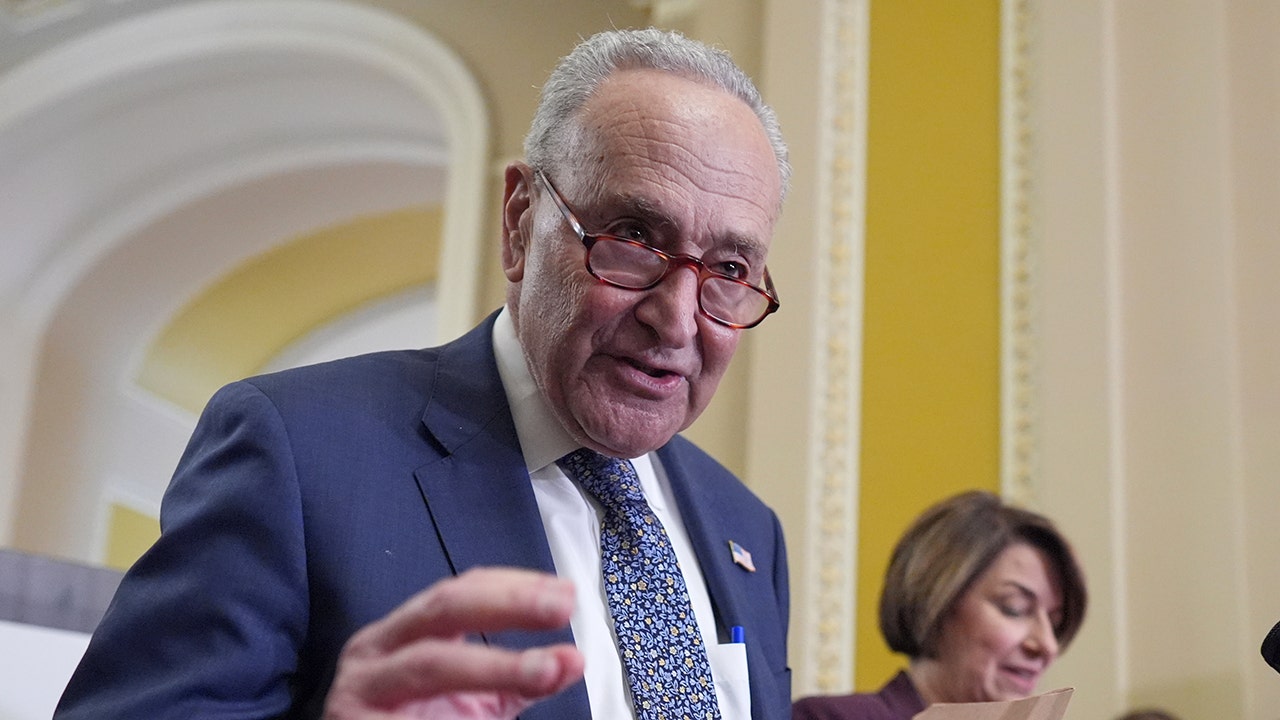Finance
Decentralized finance needs alternatives to blockchain

One of the laziest and most frustrating criticisms of digital currencies — particularly Bitcoin (BTC) — is when pundits liken it to a pyramid scheme dependent on the “greater fool” joining to make a quick buck. While some people do indeed purchase digital assets purely for speculative purposes, it’s unfair to ignore many of the great services and achievements that are being made by developers in areas such as remittances, logistics, financial inclusion and intellectual property.
A fairer criticism of blockchains is that, for all proponents say about decentralization, blockchains are still dependent on miners or other powerful players that control their networks. Whether it be factories filled with servers for proof-of-work (PoW), pools of PoW miners, large pools of tokens for proof-of-stake (PoS), or the fact that at times, more than 50% of transactions that run on the Ethereum network run through the Infura API, there’s no ignoring these massive centralized points of failure.
Granted, the design of popular PoW and PoS blockchains has been incentivized to ensure bad actors are punished, yet it remains to be seen how they will operate when the value of digital assets operating on certain blockchains exceeds the value of the underlying ledger’s native coin.
Related: Ethereum’s Merge will affect more than just its blockchain
Imagine, for instance, if a popular stablecoin grew so large that its total value exceeded that of the native coin of the underlying blockchain it operated on. Essentially, it would create an inverse pyramid whereby the holders of the native token could control the transactions of the said stablecoin. Given the concentration of many crypto assets among “whales” who have a vested interest in their blockchain’s native token (and price), this could become a very real problem.
In Ethereum, as a PoS ledger, miners’ stakes are in Ether (ETH). Should Tether (USDT) or USD Coin (USDC) become larger than Ether in market value, they could theoretically pull off a double-spend in those respective digital currencies, lose their Ether stake, and still profit more from the double-spend. Although it still remains hypothetical, it’s by no means unimaginable.
This then poses a question regarding how we should rethink distributed ledger technology (DLT) architecture and the role mining or staking assets should play.
Tether now boasts a market capitalization of over $80 billion, Circle just under $30 billion, while the Ethereum blockchain it’s programmed on has a market capitalization of Ether over $220 billion — not that far, given how quickly things can change in crypto.
Related: Tax on income you never earned? It’s possible after Ethereum’s Merge
This problem might seem theoretical and far off from being a potential issue; however, the rapid growth of cryptocurrencies as an asset class over the last decade should make people pause to consider what could happen if stablecoins enter the mainstream. Although DLT remains a very young industry, the last 14 years have given us their fair share of unexpected surprises, unintended consequences and shocks that, in hindsight, seemed obvious.
Developers might consider whether now is the time to rethink the architecture underpinning digital assets. Dependency on centralized miners or servers, mistakes made by coders writing smart contracts, and the potential for double-spend when projects exceed the value of their underlying blockchains mean decentralized finance needs to look at alternatives to blockchain. Post-blockchain distributed ledgers, such as directed acyclic graphs (DAG), which allow access to anyone and don’t rely on block producers, could provide an insight into how this industry evolves over the next decade.
Whatever form the new architecture takes is a prize waiting to be claimed. Only then will the industry finally live up to its promise and stop being associated with pyramid schemes.
Anton Churyumo is the founder of Obyte. He previously served as the co-founder and CEO of companies including Teddy ID, SMS Traffic and Platron. He graduated from the Moscow Engineering Physics Institute before obtaining a graduate degree in math and theoretical physics.
This article is for general information purposes and is not intended to be and should not be taken as legal or investment advice. The views, thoughts, and opinions expressed here are the author’s alone and do not necessarily reflect or represent the views and opinions of Cointelegraph.

Finance
Do you really save money on Prime Day?
One of the biggest online shopping events of the year — Prime Day — will take place July 8-11 across 26 countries. What began in 2015 as a celebration of Amazon’s anniversary has since grown into a multiday retail extravaganza that rivals Black Friday and Cyber Monday in both hype and sales volume.
But amid the excitement, an important question remains: Do you really save money on Prime Day? Here’s what you need to know before loading up your virtual cart.
This embedded content is not available in your region.
Prime Day is a global sales event created by Amazon that allows Prime members to access exclusive discounts and deals on a number of products across the site.
The first Prime Day took place a decade ago to mark Amazon’s 20th anniversary. It has since evolved to span several days throughout many countries, with this year’s Prime Day event being the longest so far at four days.
Shoppers can score limited-time deals on a wide range of products, from big-ticket electronics and home appliances to beauty products, clothing, and Amazon’s own devices like Echo speakers and Fire tablets. And millions participate each year. In 2024, global sales for Amazon Prime Day totaled $14.2 billion over a 48-hour period, according to Capital One Shopping Research.
Keep in mind that to access these deals, you must be a Prime member, which costs $14.99 per month or $139 per year. However, Amazon offers a free 30-day trial, allowing new users to shop the event without paying up front.
Read more: Amazon Prime Day 2025: We found the best deals to shop before the sale officially kicks off
You may be wondering whether Prime Day is just another overblown shopping holiday like Black Friday, when retailers offer increasingly unimpressive deals to encourage unnecessary spending.
There’s no denying that some Prime Day deals offer real value. The key is having a smart shopping strategy in place to purchase items you actually need at a steep discount — not impulsively spending to take advantage of perceived savings.
Historically, shoppers have seen discounts of 30%-70% on items such as Apple AirPods, laptops, robot vacuums, smart home devices, and branded kitchen appliances. Amazon’s own products, including Kindles, Fire TVs, and Echo Dots, usually come with the deepest discounts. In 2023, Prime Day purchase discounts totaled $2.5 billion, according to Capital One.
Retail analysts have found that many of these items are offered at their lowest prices of the year. So yes, if you’ve had your eye on a specific product and it happens to be on sale during Prime Day, you could walk away with serious savings.
Read more: 7 money-saving perks for Amazon Prime members
Keep in mind that not all the deals offered on Prime Day are really worth it. It’s important to have a plan and do your research ahead of time so you know whether you’re looking at a true discount.
One common tactic retailers use to encourage spending is “price anchoring,” where the listed original price is inflated, making the discount look more impressive than it actually is. In some cases, the so-called sale price is just a return to the item’s normal price after a brief increase in the weeks leading up to Prime Day.
Another issue is the impulse-buy nature of the event. Flash deals and lightning sales are designed to create urgency, leading many shoppers to make purchases they wouldn’t otherwise consider. If you buy something you don’t need — or wouldn’t have bought without the flashy red countdown clock — you’re not really saving money, even if the price is lower.
If you’re hoping to cash in on Amazon Prime savings, it’s important to make a game plan.
It’s easy to get distracted by discounts and make impulsive purchases while browsing. Before you start shopping, make a list of the key items you really want. Prioritize finding deals on those must-haves — and only buy them if it makes sense for your budget.
Decide how much money you can comfortably afford to spend on Prime Day ahead of time and stick to that limit. You’ll avoid throwing your budget off track and ending up with buyer’s remorse.
This year, Amazon is offering over 40 personalized deal features to help shoppers find discounts on products they’re most likely to be interested in. Look for personalized suggestions within the “Recommended deals for you,” “Top deals for you,” and “Customers’ Most-Loved” features to zero in on the deals you may be looking for.
Subscribe and save (if it makes sense)
Amazon’s Subscribe and Save feature offers year-round discounts on items you need to stock up on regularly. On Prime Day, these items may have an additional discount that could help you score extra savings.
Many major retailers such as Walmart, Target, and Best Buy will have their own sales and promotions around Prime Day when they know shoppers are in the mood to splurge. Before you check out, compare the price of items in your cart across a few different retailers to ensure you’re getting the lowest price overall.
Finance
One college major is more popular than ever—but comes with financial catch

One college major is soaring in popularity—but graduates shouldn’t expect to be making good money from that alone.
A degree in psychology has proven an increasingly popular choice for college students year after year, with a noted spike in degrees awarded following 2020.
In 2023, 140,711 bachelor’s degrees in psychology were awarded to graduates across the United States, compared to 86,989 two decades earlier in 2004, according to the American Psychologial Association (APA).
The trend has been attributed to several possible factors, from younger generations becoming more open about mental health discussions, to online psychology influencers gaining popularity, and even certain films and TV shows.
But while the number of psychology graduates is increasing, the monetary reward may not be what they hope.
According to a 2025 report from the Federal Reserve Bank of New York, the median wage of a psychology graduate in their early career is $45,000—moving to $70,000 by mid-career.
Dr. Ryan Sultan MD, double board-certified and the founder and director of Integrative Psych, believes the rise in psychology degrees is generational.
“Younger people tend to be more open to discussing mental health topics, including anxiety, depression, and trauma,” he told Newsweek. “They’re more comfortable having conversations about psychological wellbeing compared to previous generations. They have more exposure to psychology and related concepts, and therefore more people are seeking out psychology degrees.”
Lacheev/Getty Images
Career strategist Patrice Williams Lindo, CEO of Career Nomad, suggested this choice of major is rising “because people are desperate to understand themselves and the world around them, especially in the wake of collective trauma from the pandemic, social unrest, and economic uncertainty.
“Gen Z in particular is drawn to psychology not only through TikTok therapy culture but because they see mental health work as purpose-driven—even if it doesn’t pay six figures out the gate.”
Lindo pointed to a particular uptick of interest in psychology majors post-pandemic, as discourse around mental health became more mainstream on social platfoms, which may have made psychology degrees feel culturally relevant and important, despite it not having a clear career path post-graduation.
When it comes to graduate roles being relatively poorly paid, Sultan believes this is a positive thing “for the future of psychology.”
“I find that these younger psychology students are conscious of the fact that it’s not a money-driven profession, and therefore choose this field because they are genuinely interested in understanding the mind and human behavior,” he suggested.
However, Sultan works closely with psychology students at his practice, and notes some may not know exactly what the course and career entail, as they “often tell me that they weren’t expecting the field to have such a large research component.”
Career strategist Linda said people may not realize that a bachelor’s degree in psychology alone rarely leads to a high-paying role, and being a clinician requires a lot of further work.
“You need a clear plan for either further training or using your psych background in allied fields—like UX research, HR, or policy—if you want sustainable income.”
This correlates with the experience of Dr. Azadeh Weber, who now runs a private practice in California where she says she makes $200,000 a year working part-time. But after graduating with a bachelor’s in psychology, she couldn’t find a job in her field and ended up with a career in tech sales, unrelated to her degree.
At the age of 30, she returned to education, attending graduate school, and became a doctor of clinical psychology at the age of 36.
“I believe the reason why getting an undergraduate degree in psychology is popular is because many people are intrinsically motivated to understand themselves and others,” she said.
“One of the most beautiful parts of my job is also learning from my clients. Everyone has something to teach others,” she said.
She noted that, had she stayed in her tech sales career, at this stage she “may be making the same income as I do now” but it would likely mean having to work “full-time at a corporation.”
“This would mean less time with my family. Overall, I am happy with my decision and love my job.”
Finance
Cascadia Announces Closing of Financing

/NOT FOR DISTRIBUTION TO U.S. NEWSWIRE SERVICES OR FOR DISSEMINATION IN THE UNITED STATES/
VANCOUVER, BC, July 3, 2025 /CNW/ – Cascadia Minerals Ltd. (“Cascadia“) (TSXV:CAM) (OTCQB:CAMNF) is pleased to announce that it has oversubscribed and closed its previously announced non-brokered private placement (the “Placement“) for total proceeds of C$2,274,385, in conjunction with Cascadia’s planned acquisition of Granite Creek Copper Ltd. (the “Transaction“), see news release dated June 9, 2025 for more details. The Placement was oversubscribed by 174,180 subscription receipts.
The Placement consisted of the sale of: (a) 14,459,894 subscription receipts (“Subscription Receipts“) at a price of $0.14 per Subscription Receipt for gross proceeds of C$2,024,385; and (b) 1,785,714 units (“Cascadia Units“) at a price of C$0.14 per Cascadia Unit for gross proceeds of C$250,000. Each Subscription Receipt entitles the holder to receive at the effective time of the Transaction one unit of Cascadia consisting of one Cascadia share and one common share purchase warrant (a “Warrant“). Each Warrant will entitle the holder thereof to purchase an additional Cascadia share at a price of $0.24 per share for a period of two years following the date of issuance of the Warrant. The Cascadia Units also consist of one Cascadia share and one common share purchase warrant having the same terms as the Warrants forming part of the units underlying the Subscription Receipts.
The proceeds from the sale of the Subscription Receipts will be held in escrow pending the closing of the Transaction. If the closing of the Transaction has not completed by August 29, 2025, the Subscription Receipts will be cancelled and the escrowed proceeds returned to the subscribers. Cascadia will use the proceeds of the Placement to pay expenses associated with the Transaction and to conduct exploration on the Carmacks Project.
Cascadia will pay cash finders’ fees totalling $90,623 and issue a total of 647,308 finder warrants (“Finder Warrants“) in connection with the financing, with such fees to be paid and warrants to be issued at the closing of the Transaction. Each Finder Warrant shall be exercisable into one common share of Cascadia for a period of 24 months from issue, at an exercise price of $0.24 per Finder Warrant.
The Cascadia shares and warrants comprising the Cascadia Units and any Cascadia shares issuable upon the exercise of these warrants are subject to a hold period in Canada until November 4, 2025. The Subscription Receipts are also subject to a hold period in Canada which ends on November 4, 2025, but the Cascadia shares and Warrants issuable upon the conversion of the Subscription Receipts at the effective time of the Transaction and any Cascadia shares issued on the exercise of the Warrants will not be subject to a resale hold period in Canada.
-

 Politics1 week ago
Politics1 week agoSchumer to force Senate reading of Trump's entire 'big, beautiful bill'
-

 Business1 week ago
Business1 week agoNew L.A. Trader Joe's opens across the street from … another Trader Joe's
-

 World1 week ago
World1 week agoCommissioner and MEPs in Budapest to challenge Orban’s Pride ban
-

 Technology1 week ago
Technology1 week ago5.4 million patient records exposed in healthcare data breach
-

 Technology1 week ago
Technology1 week agoTesla says it delivered its first car autonomously from factory to customer
-

 Politics1 week ago
Politics1 week agoTrump administration takes on new battle shutting down initial Iran strike assessments
-

 World1 week ago
World1 week agoUganda’s President Museveni confirms bid to extend nearly 40-year rule
-

 News1 week ago
News1 week agoUS multinationals on track for minimum tax reprieve after G7 deal












